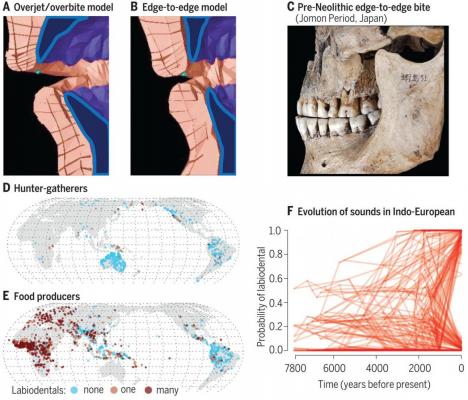Human sound systems are shaped by post-Neolithic changes in bite configuration

Linguistic diversity, now and in the past, is widely regarded to be independent of biological changes that took place after the emergence of Homo sapiens We show converging evidence from paleoanthropology, speech biomechanics, ethnography, and historical linguistics that labiodental sounds (such as "f" and "v") were innovated after the Neolithic. Changes in diet attributable to food-processing technologies modified the human bite from an edge-to-edge configuration to one that preserves adolescent overbite and overjet into adulthood. This change favored the emergence and maintenance of labiodentals. Our findings suggest that language is shaped not only by the contingencies of its history, but also by culturally induced changes in human biology.